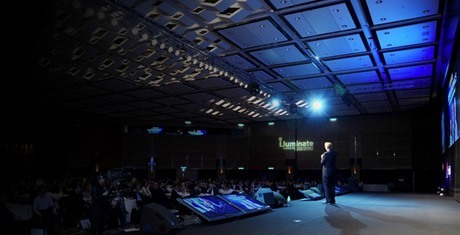
In speaking to audiences, I often point out my surprise at how little time we spend in business really thinking about the future. It’s easy to do when there are numerous tasks at hand. But, since it’s where we’re all going to be spending the rest of our lives, you would think that we’d devote a bit more time to considering the future.
Taking the time to think about the future isn’t limited to pondering tomorrow, next week or next year. Instead, it’s much more of a two-way street. That’s because how you think about the future—whatever the time frame you attach to that term—has a very real effect on what you do in the present.
That’s what I call a Futureview. And it’s essential that an organization have a consistent and aligned Futureview to best anticipate the future with the utmost confidence.
Futureview Defined
My definition of Futureview, which I began to develop several decades ago, refers to your perception of the future.
In essence, when you think of the future, what comes to mind? Are you optimistic and excited? By the same token, are you discouraged, perhaps convinced that your best days are well behind you?
As I mentioned earlier, how you view the future has a clear impact on your present thoughts and actions. For example, if your Futureview is upbeat and energized, you’re undoubtedly going to approach what you do in the present with a similar level of energy and engagement.
But what if your Futureview is less optimistic? It stands to reason that your actions and thoughts in the present moment are going to reflect that attitude.
In that sense, Futureview is very circular. Not only does it define how you see the days to come, it also exerts a powerful influence in the moment, potentially influencing everything you both see and do.
An Aligned Futureview: An Organizational Advantage
Futureview is critical when it comes to the individual. But, when you stop to think about it, it can be even more important when considered on an organization-wide basis.
Think about the varied people within an organization. Some have an optimistic Futureview of where the organization is headed. They look forward to coming to work and contributing on every level possible.
On the other hand, those with a negative Futureview may see little more than a dead end. They don’t have optimistic expectations for the organization as a whole or, for that matter, their place in it. Their performance may be lackluster, drained by a negative Futureview (not to mention by the energy expended looking for some other place to work).
If nothing else, that sets up a contradictory dynamic where people can effectively be working against each other. Take sales as an example.
A salesperson with a positive Futureview expresses optimism and opportunity to prospects. By contrast, a salesperson with a negative Futureview may be only going through the motions in dealing with customers. Consider the mixed, confusing message that may be sending to your overall pool of both existing clients and prospects.
In short, a shared, positive Futureview is pervasive. It can help boost communication, innovation and a shared sense of moving in the same direction as a group. It’s both engaging and energizing.
Developing an Aligned Futureview
Since a shared Futureview can be so powerful, how can an organization develop it?
One way is through identifying Hard Trends, those future certainties. Consider those Hard Trends that are shaping the future of your organization and your industry. From there, consider: Is your Futureview aligned with those powerful forces, those things that we know for a fact are going to occur?
That’s a great way to build a shared, positive Futureview—not only does it encourage widespread buy-in (after all, we know these things are going to happen), but it also underscores the enormous opportunity of leveraging those future certainties.
An organization with a shared, constructive Futureview also stresses communication. If leadership has an optimistic Futureview, not only do they make certain that it is a working part of their organization’s function and culture, they also communicate it to everyone else in the group, in effect: This is where we’re going, this is why we’re so excited and this is why we want to make certain you share this view as well.
That’s a Futureview that builds a powerful, inclusive culture, one that can be singular to your organization.
Wondering what steps you need to take to align your company’s Futureview? These and other insights are in my new book, The Anticipatory Organization










